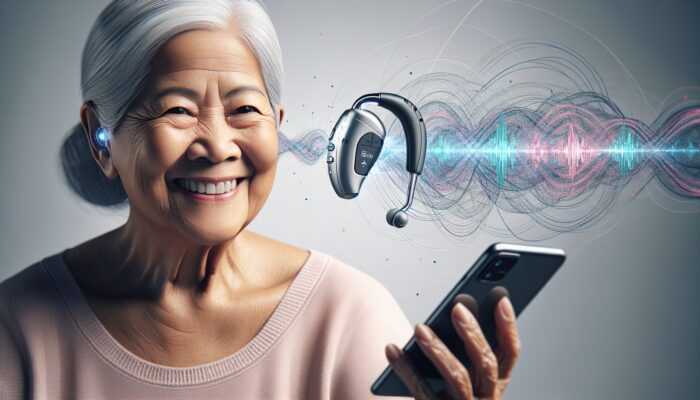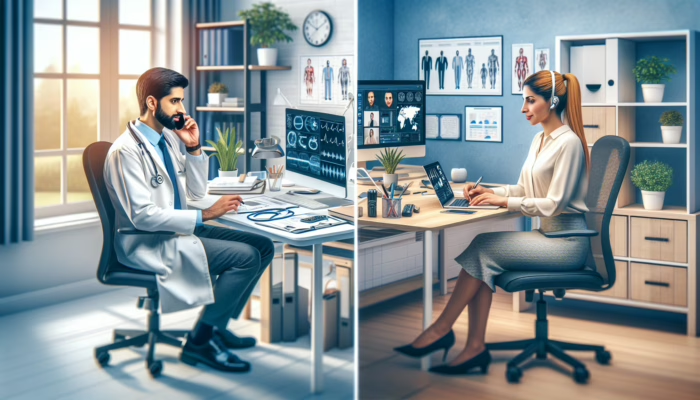Embracing the Hearing Aid Adjustment Journey
Experiencing Initial Discomfort with Hearing Aids

Adjusting to hearing aids involves more than just improved sound perception; it encompasses a substantial physical adjustment process. Many users report experiencing discomfort as their ears and brains adapt to the new sensation of wearing these devices. This initial phase can be likened to breaking in a new pair of shoes, which often requires time and patience. Users may feel a sense of fullness in their ears, experience slight itching, or, in some cases, even mild pain, particularly if the fit of the device is not ideal. Recognizing that this discomfort is a normal part of the acclimatization process can help users remain positive during this transition.
The sensation of discomfort can be particularly surprising for individuals who have lived with hearing loss for an extended period and are suddenly exposed to amplified sounds. It is crucial to understand that this period of unease is temporary and can be managed. To ease into the adjustment, users might find it beneficial to gradually increase the duration they wear their hearing aids each day. Starting with short intervals allows the ears to adapt more comfortably while reducing discomfort over time. This gradual approach can foster a smoother transition to a more enhanced auditory experience.
Moreover, the design and fit of each type of hearing aid significantly influence the unique discomfort that users experience. Custom-fitted devices may initially feel snug against the ears, while behind-the-ear models can create pressure on the head. As the brain becomes accustomed to these new sensations, the initial discomfort often transforms into a sense of familiarity and comfort, making the adjustment period more manageable and less daunting.
Understanding Sound Processing with Hearing Aids
Upon first wearing hearing aids, users frequently encounter a puzzling mix of sounds—some are familiar, while others can feel jarring or overwhelming. This experience stems from the brain’s sound processing capabilities, which require time to adjust to the amplified sounds produced by hearing aids, many of which had been muted or entirely missed due to prior hearing loss. The brain must relearn how to interpret these sounds effectively, which can be an intriguing yet challenging part of the adjustment process.
Sounds that were once mere background noise, such as rustling leaves, distant conversations, or the hum of household appliances, suddenly become pronounced and easier to hear. Initially, this heightened awareness can feel unnatural and even disconcerting for users. They may find themselves overwhelmed as their auditory systems struggle to differentiate between significant sounds and background noise. This adjustment is crucial for users to navigate their auditory environments effectively.
Recognizing the importance of this adjustment phase is essential. The brain has previously developed a filtering process to ignore certain sounds, which changes significantly when enhanced hearing occurs. Over the course of weeks and months, users gradually learn to identify which sounds hold significance, enabling them to focus on conversations and crucial audio cues while filtering out distractions. This process resembles tuning an instrument; with consistent practice, the brain becomes skilled at discerning and interpreting a richer auditory landscape, ultimately enhancing the overall listening experience.
Adapting Physically to Hearing Aids
The physical presence of hearing aids can be a surprising adjustment for many users. In the initial days of use, individuals often become acutely aware of the weight and fit of their devices. They may experience sensations they have never encountered before, such as the pressure exerted by a behind-the-ear model resting against their skin or the feeling of an in-ear device nestled within their ear canal. This adjustment is not solely psychological; it demands physical adaptation and can take time to get used to.
Different styles of hearing aids present their own unique challenges. Some users may find particular models more comfortable than others, which can lead to frustration during the adjustment phase. Discovering the right fit is critical, as a well-fitted device can alleviate many of the physical discomforts associated with hearing aids. Users should work closely with audiologists to ensure that their devices are fitted correctly, as this can significantly enhance comfort and overall satisfaction.
Furthermore, the body itself requires time to acclimate to the presence of hearing aids. Similar to the experience of wearing glasses for the first time, there is a period of adjustment where the brain and body must synchronize with the new auditory feedback. Engaging with audiologists for proper fittings and adjustments plays a vital role in ensuring users achieve the best possible comfort and functionality from their devices. This collaborative effort is essential for a successful transition into the world of enhanced hearing.
Mastering Technological Adaptation with Hearing Aids

Experiencing Enhanced Sound Quality
Today’s modern hearing aids are technological marvels that provide unparalleled sound quality, transforming how users experience their auditory environments. However, this enhanced clarity can be a double-edged sword for many individuals. Initially, users may find it challenging to appreciate the full spectrum of sound, as the clarity can reveal sounds they haven’t heard in years, which can be overwhelming and difficult to process. The adjustment to hearing aids can feel like a journey into new auditory territory.
Hearing aids amplify not only speech but also all surrounding sounds, creating a cacophony in environments that once felt comfortably muted. Users may suddenly hear rustling papers, distant conversations, or even their own footsteps with startling clarity. The brain must relearn how to process and prioritize these sounds—a task that requires considerable time and patience. This adjustment period is crucial for users to fully appreciate the benefits of their devices.
Once acclimated, users often report a significantly richer auditory experience—conversations become clearer, music resonates more deeply, and the sounds of nature regain their vibrancy. Adjusting to this enhanced sound quality is essential for overall satisfaction with hearing aids. Just like any significant change in life, patience and gradual exposure to new sounds and environments are key to achieving a fulfilling auditory experience.
Navigating Advanced Hearing Aid Features
Modern hearing aids are equipped with a plethora of features designed to enhance the user experience. From noise reduction capabilities to directional microphones, these advanced functionalities can significantly improve how users interact with their surroundings. However, learning to navigate these features can present a steep learning curve for many individuals. Users may initially feel overwhelmed by the technology at their fingertips, which can be daunting.
For instance, noise reduction settings can help filter out background sounds in crowded environments, yet understanding when and how to use these features effectively requires practice and familiarity. Similarly, directional microphones can enhance speech understanding during conversations, but users must learn to position themselves optimally to fully benefit from these features. Getting acquainted with these settings can be an enlightening experience, as users often discover new ways to engage with the world around them.
Audiologists play a crucial role in this process, providing demonstrations and guidance that ease the learning curve associated with advanced hearing aid features. Over time, users can gain confidence in manipulating these settings, leading to a more enjoyable and satisfying listening experience. Embracing this journey of feature familiarization is essential for maximizing the potential of hearing aids and enhancing overall quality of life.
The Importance of Customization for Optimal Hearing Aid Performance

Every individual possesses a unique hearing profile, which necessitates that hearing aids be finely tuned to meet specific needs and preferences. This customization process is vital for ensuring optimal performance and satisfaction. However, it often requires multiple appointments with an audiologist to achieve the perfect configuration tailored to the user’s unique hearing characteristics. This can be a source of impatience for those eager to experience the benefits of their hearing aids.
Initial settings may not fully align with a user’s preferences or the specific nature of their hearing loss, necessitating adjustments based on user feedback. While this process can be frustrating, it is important to recognize that this adjustment period is essential for achieving the ideal sound quality tailored to the individual’s lifestyle and auditory needs. Users can enhance their experience by communicating openly with their audiologists about their comfort levels and preferences.
Additionally, some users may require different settings for various environments; what works well in a quiet room may not be suitable for a bustling café. As users become more familiar with their hearing aids, they can better articulate their needs to their audiologists, ensuring that their devices provide the best auditory experience across different contexts. This collaboration is key to achieving a personalized and effective hearing solution.
Seamless Connectivity Integration with Hearing Aids
The integration of hearing aids with smartphones and other devices represents a fantastic feature that greatly enhances usability and accessibility. However, mastering this technology can initially feel daunting for users. Pairing hearing aids with smartphones for audio streaming introduces an exciting level of functionality, allowing users to enjoy music, podcasts, and phone calls directly through their hearing devices, which can significantly improve their auditory experience.
This connectivity requires a solid understanding of both the hearing aid’s capabilities and the smartphone settings. Initially, users may perceive the process as cumbersome, leading to frustration. Yet, with practice and familiarization, the advantages of this integration become increasingly apparent. Users can enjoy the convenience of controlling their hearing aids directly from a smartphone app, allowing for immediate adjustments tailored to their preferences in real time.
Moreover, this integration often enhances the overall quality of life for users. The ability to transition seamlessly between activities without needing to switch devices allows for greater flexibility and independence. Despite the initial technical challenges, the long-term rewards of connectivity integration can be substantial, ultimately leading to a more enriching and enjoyable auditory experience.
Essential Maintenance and Care for Hearing Aids
Proper maintenance and care for hearing aids are crucial for their longevity and optimal performance. New users might initially feel overwhelmed by the need for regular cleaning and upkeep. Understanding the intricacies of hearing aid maintenance—such as battery replacement, cleaning the microphones, and ensuring moisture protection—can seem daunting at first. However, establishing a routine can help simplify this process significantly.
Just as routine maintenance improves the performance of a vehicle, a consistent care schedule ensures hearing aids function effectively over time. Users should consult their audiologists for tailored advice on maintaining their devices, as they can provide valuable insights and recommendations. By developing a regular maintenance routine, users can ensure their hearing aids remain in top condition, enhancing their overall listening experience.
As users gain confidence in their maintenance routines, they often find satisfaction in the longevity of their hearing aids, which directly contributes to an improved auditory experience. Becoming adept at maintenance not only prolongs the life of the devices but also ensures that users continue to enjoy the best sound quality possible, fostering a more fulfilling relationship with their hearing aids.
Addressing Psychological Factors in Hearing Aid Adjustment
Accepting Hearing Loss and the Role of Hearing Aids
Coming to terms with hearing loss is a deeply emotional journey for many individuals. They often grapple with feelings of denial, frustration, and sadness as they acknowledge their hearing difficulties and the necessity of utilizing hearing aids. This psychological adjustment can significantly impact how long it takes for users to feel comfortable with their devices. Acceptance is often the first critical step in this process.
Users may benefit from counseling or support groups that help them articulate their concerns and feelings regarding hearing loss. Engaging with others who share similar experiences fosters a sense of community and understanding, which is vital during this transitional phase. This support can make a significant difference in how individuals cope with the emotional aspects of their hearing loss.
Moreover, embracing the idea that hearing aids can profoundly enhance quality of life is crucial. Once users accept their hearing loss and view hearing aids as tools for regaining sound, they may experience a positive shift in mindset that accelerates their adjustment period. This acceptance allows individuals to approach their new reality with optimism, facilitating a smoother transition into a world enriched by sound.
Overcoming Self-Image Concerns Related to Hearing Aids
Concerns about appearance and how others perceive the use of hearing aids can heavily influence the adjustment period for many users. The stigma often associated with wearing hearing aids can lead individuals to feel self-conscious, which may result in reluctance to wear them consistently. Addressing these self-image concerns is essential for fostering a positive relationship with hearing aids.
It’s important to shift the narrative surrounding hearing aids from one of stigma to empowerment. Today’s modern hearing aids come in various styles and colors, allowing users to select options that resonate with their personal aesthetic. Furthermore, as more public figures openly share their experiences with hearing loss, the conversation surrounding hearing aids is evolving, helping to destigmatize their use.
Additionally, the focus should be on the numerous benefits that hearing aids bring to social interactions and personal relationships. The ability to engage fully in conversations and participate actively in social settings can enhance self-esteem and confidence over time, providing users with a renewed sense of belonging and community engagement. This shift can significantly impact their overall quality of life and mental well-being.
Building Confidence in Using Hearing Aids
Building confidence in using and relying on hearing aids effectively is a gradual process for many individuals. Initially, users may feel unsure about their ability to adapt and utilize their devices across various settings. However, through practice and positive reinforcement, confidence can flourish over time. Engaging in regular listening activities, such as conversing with family and friends or attending social events, can significantly help users become more comfortable with their hearing aids.
Users should celebrate small victories along the way, such as successfully following a conversation in a noisy restaurant or hearing their favorite song clearly for the first time. These moments of achievement can provide essential motivation and encouragement as they navigate their adjustment journey. Additionally, audiologists can offer valuable guidance on effective communication strategies that empower users to advocate for their hearing needs.
Over time, as users practice and engage with their hearing aids in various contexts, they often find that their confidence grows. Embracing the benefits of hearing aids fully allows them to enhance their overall auditory experiences, leading to more meaningful interactions and relationships with others.
Navigating Environmental Adaptation with Hearing Aids
Adapting to Varied Sound Environments
Adjusting to different sound environments is a critical aspect of acclimating to hearing aids. Users must learn how to navigate diverse acoustic landscapes, ranging from serene, quiet rooms to bustling public spaces. Each environment presents unique auditory challenges that require adaptation and practice. For instance, transitioning from a tranquil home setting to a lively café can be jarring for many users.
In such situations, users may initially struggle to filter out background noise and concentrate on conversations. This process of environmental adaptation necessitates patience and practice as the brain learns to categorize and prioritize sounds effectively. Practicing in a variety of settings can help ease this adjustment period, allowing users to become more adept at managing their auditory experiences.
To facilitate this acclimation process, users should consider gradual exposure to different environments, starting with quieter venues before progressing to more complex soundscapes. Over time, they will develop the skills necessary to navigate varying auditory environments, leading to greater comfort and satisfaction with their hearing aids. Embracing this journey of adaptation will ultimately enhance their overall quality of life.
Managing Background Noise with Hearing Aids
One of the most significant challenges users face is learning to filter out background noise while focusing on important sounds. Navigating the auditory landscape in crowded places can be particularly overwhelming for those who are new to using hearing aids. Many users discover that their devices initially amplify all sounds equally, making it difficult to discern speech from competing background chatter. This situation can lead to frustration, as individuals may feel lost in public settings.
However, as users become more familiar with their devices, they can learn to adjust settings that help minimize this challenge. Strategies for managing background noise include practicing in various environments and utilizing features like directional microphones. Engaging with audiologists to explore personalized settings that enhance their ability to focus on conversations without being overwhelmed by competing sounds is also beneficial.
By developing effective strategies and utilizing the features available in their hearing aids, users can significantly improve their ability to manage background noise. This proactive approach will lead to a more satisfying auditory experience, allowing them to engage more fully in conversations and social interactions.
Thriving in Various Communication Settings
Adapting to various communication scenarios is essential for users adjusting to hearing aids. Whether engaging in one-on-one conversations or participating in group discussions, each setting presents unique challenges that require adjustment and practice. In individual conversations, users may find it easier to focus, but group settings can be intimidating due to multiple voices vying for attention.
To enhance their understanding and participation, users should practice active listening techniques, such as maintaining eye contact and observing body language. These strategies can significantly improve comprehension despite auditory challenges. Additionally, engaging in diverse social settings allows users to gain practical experience in managing communication obstacles, ultimately building their confidence as they navigate these interactions.
Embracing opportunities to practice in a variety of communication contexts will gradually help users become more adept and confident in their interactions. This ongoing practice will enhance their overall experience with hearing aids, allowing them to foster deeper connections and engage more fully in their personal and social lives.
Leveraging Professional Guidance for Hearing Aid Success
Utilizing Audiologist Support for Optimal Adjustment
The support of an audiologist is invaluable during the adjustment period for hearing aids. Regular follow-ups ensure that the devices are fine-tuned for optimal performance, addressing any challenges users may face. Audiologists serve as vital partners in navigating the complexities of hearing loss and hearing aid use, offering personalized adjustments based on user feedback.
Users should feel empowered to communicate their experiences and any discomfort they encounter, fostering a collaborative relationship with their audiologist. This partnership is crucial for achieving a tailored auditory experience that meets individual needs. Furthermore, audiologists can offer guidance on effective listening strategies, ensuring users feel equipped to manage various sound environments.
Ongoing support from audiologists is essential for fostering confidence and satisfaction with hearing aids. By maintaining open lines of communication, users can continually refine their auditory experiences, ultimately enhancing their quality of life through improved hearing.
The Role of Counseling Services in Hearing Aid Adjustment
Access to counseling can play a vital role in the emotional and psychological adjustment to hearing aid use. The journey of adapting to hearing loss and the associated stigma can evoke feelings of anxiety and depression. Counseling services provide users with coping strategies and emotional support, helping them navigate their feelings regarding hearing loss and the use of hearing aids.
Counselors can assist individuals in developing a positive mindset, focusing on the benefits of hearing aids and the opportunities they present for improved communication and social engagement. Additionally, support groups can foster a sense of community, connecting users with others who share similar experiences. This collective support can significantly enhance users’ emotional well-being as they adapt to their new reality.
Participating in therapeutic sessions can empower users, enabling them to embrace the changes in their hearing journey with resilience and optimism. This support is essential in fostering a positive relationship with their hearing aids and enhancing overall quality of life.
Engaging in Training Programs for Hearing Aid Mastery
Participating in training programs can be an effective way for hearing aid users to gain practical tips and strategies for effective device use. Many audiology clinics and organizations offer workshops designed to help individuals become more proficient in navigating their hearing aids. These programs often cover critical topics such as effective communication strategies, managing background noise, and understanding device features.
By engaging in these workshops, users can build their confidence and develop a deeper understanding of how to maximize their hearing aids’ potential. This practical knowledge is vital for ensuring a successful and fulfilling auditory experience. Furthermore, training programs can foster a sense of community among participants, creating opportunities for shared experiences and encouragement.
This collective learning environment enhances motivation and provides essential support for users as they embark on their hearing journey. Embracing training opportunities can lead to greater confidence and competence in using hearing aids, ultimately transforming users’ auditory experiences.
Integrating Hearing Aids into Daily Life
Creating a Seamless Daily Routine with Hearing Aids
Incorporating hearing aids into daily activities can initially feel overwhelming, as users must adapt their routines. Whether at work, during hobbies, or at home, finding ways to seamlessly integrate hearing aids into various aspects of life is crucial for successful adjustment. Establishing a routine for wearing hearing aids promotes consistency and comfort.
Users may choose to set specific times for wearing their devices, gradually increasing those intervals as they acclimate. Over time, wearing hearing aids will become a natural and integral part of daily life. Additionally, exploring how hearing aids enhance daily activities can motivate users to embrace their devices fully.
Engaging in hobbies, attending events, or participating in community activities becomes significantly more enjoyable when users can hear and participate fully. This positive reinforcement encourages consistent use and strengthens their relationship with their hearing aids, ultimately leading to a richer, more fulfilling lifestyle.
Enhancing Social Interactions with Hearing Aids
Navigating social situations with hearing aids can initially feel awkward, as users may worry about how others perceive them. However, with practice, many individuals find that their confidence grows, allowing them to engage more freely in conversations. One effective strategy is to communicate openly with friends and family about the use of hearing aids. When those around them understand the user’s needs, it creates a supportive environment that fosters positive interactions.
Users should also seek out social settings that feel comfortable and gradually introduce themselves to more complex environments. As they gain confidence, they often discover that social interactions become smoother and more enjoyable, leading to richer connections and a more fulfilling social life. This gradual exposure is essential for building confidence and ensuring that users can fully participate in their communities.
Embracing opportunities for social engagement can lead to lasting relationships and enhance overall quality of life. By focusing on positive interactions and open communication, users can strengthen their connections with others, making their hearing aids an integral part of their social experiences.
Establishing Effective Maintenance Habits for Hearing Aids
Developing a routine for cleaning and maintaining hearing aids is crucial for their longevity and effectiveness. New users might initially struggle with understanding the intricacies of maintenance, but establishing a consistent practice can simplify the process significantly. Regular cleaning helps prevent the accumulation of earwax and moisture, which can impair device performance.
Users should familiarize themselves with the specific cleaning methods recommended by their audiologist, ensuring that their devices remain in optimal condition. Additionally, setting reminders for battery replacements and regular check-ups can enhance reliability. Over time, users often find satisfaction in caring for their hearing aids, leading to an extended lifespan and improved auditory experiences.
By taking an active role in the maintenance of their devices, users can ensure that their hearing aids continue to function effectively, providing them with the best sound quality possible. This proactive approach enhances their overall experience and fosters a positive relationship with their hearing aids.
Reaping the Long-Term Benefits of Hearing Aids
Experiencing Improved Hearing Over Time
Over time, users of hearing aids typically experience significant improvements in their ability to hear and understand sounds. This enhancement plays a crucial role in their overall quality of life and emotional well-being. Initially, users may feel overwhelmed by the range of sounds they can suddenly hear, but as they adjust, the benefits become increasingly apparent.
Everyday activities—such as enjoying conversations, watching television, or listening to music—transform as sound clarity improves. Research indicates that individuals who consistently use hearing aids report higher satisfaction levels in their daily lives, showcasing the profound impact of improved hearing on personal relationships and social engagement. This transformation underscores the importance of embracing hearing aids as tools for enhancing quality of life.
Enhancing Overall Quality of Life with Hearing Aids
Adjusting to hearing aids can lead to a more fulfilling quality of life. As users regain access to sounds that enrich their experiences, they often find greater joy in social activities, hobbies, and personal relationships. The ability to engage fully in conversations fosters deeper connections with friends and family, as users can participate in discussions without feeling isolated.
This enhanced communication contributes to increased feelings of belonging and community engagement. Moreover, improved hearing can open doors to new opportunities, whether pursuing career advancements, participating in social events, or simply enjoying life’s pleasures. The benefits of hearing aids extend far beyond improved sound; they encompass a more vibrant and connected life.
Continued Adaptation to New Sound Experiences
The adjustment process for hearing aids is ongoing; users may continue to adapt to new sounds and settings even after the initial transition. As life circumstances change, such as moving to a different environment or facing new auditory challenges, the need for continued adaptation becomes apparent. Regular consultations with audiologists can help users reassess their hearing needs and make necessary adjustments to their devices.
This proactive approach allows individuals to maintain optimal hearing experiences throughout life. The journey of adapting to hearing aids is dynamic, and users should embrace the ongoing nature of this process. With every adjustment, they can discover new ways to enhance their auditory experiences, enriching their connections with the world around them.
Slowing Cognitive Decline Through Hearing Aid Use
Research has shown that consistent use of hearing aids can help slow cognitive decline, supporting better mental acuity and memory function over the long term. Hearing loss has been linked to increased risks of cognitive impairment, making the use of hearing aids a crucial factor in maintaining cognitive health. By actively engaging with sounds and conversations, users stimulate their brains, promoting mental agility and cognitive function.
This connection highlights the importance of hearing aids not only for improved communication but also for preserving cognitive health as individuals age. Embracing hearing aids as tools for both auditory enhancement and cognitive well-being can lead to a more enriched and fulfilling life. The long-term benefits of maintaining auditory connections extend to every aspect of users’ lives, enhancing overall well-being and happiness.
Frequently Asked Questions About Hearing Aids
What is the typical adjustment period for hearing aids?
Adjustment periods vary among individuals, but many require several weeks to fully acclimate to wearing hearing aids. Consistent use can help expedite this process, allowing users to adapt more comfortably to their devices.
How should I address discomfort with my hearing aids?
If discomfort persists, it’s essential to consult with your audiologist. They can make adjustments to the fit or settings to enhance comfort and ensure your hearing aids perform optimally.
Is it safe to wear hearing aids all day?
Yes, most users can wear hearing aids all day. However, it is often recommended to start with shorter periods and gradually increase wear time as you adjust to the devices.
What are the best practices for cleaning my hearing aids?
Regular cleaning typically involves using a soft, dry cloth and a gentle brush to remove earwax and debris. It is advisable to consult your audiologist for specific cleaning instructions tailored to your hearing aids.
Which features should I consider when choosing hearing aids?
Look for features such as noise reduction, directional microphones, and Bluetooth connectivity. Consider your lifestyle and specific hearing needs when selecting a device to ensure it meets your requirements.
Can hearing aids effectively manage background noise?
Yes, many modern hearing aids come equipped with features designed to reduce background noise, allowing users to focus on conversations and important sounds with greater ease.
Will I need to make routine adjustments to my hearing aids?
Yes, regular adjustments may be necessary as your hearing needs change or as you adapt to different environments. Regular consultations with your audiologist can help keep your hearing aids functioning optimally.
How often should I visit my audiologist?
It is advisable to schedule follow-ups with your audiologist every six months to a year, or as needed, to ensure your hearing aids are functioning optimally and to address any concerns you may have.
Is it possible to connect my hearing aids to my smartphone?
Many modern hearing aids offer Bluetooth connectivity, allowing you to connect them to your smartphone for seamless audio streaming and control via dedicated apps.
What are the long-term advantages of using hearing aids?
Long-term benefits include improved hearing, enhanced quality of life, reduced cognitive decline, and increased social engagement, all contributing to overall well-being and fulfillment.
Discover our journey on X!
The post Hearing Aids Adjustment: Understanding the Transition Process appeared first on The Microsuction Ear Wax Removal Network.























